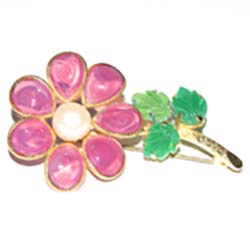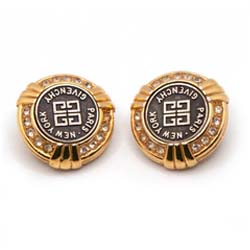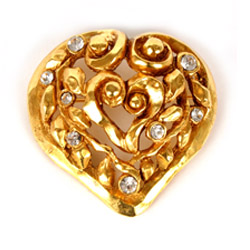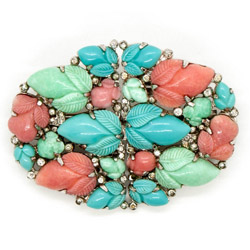Egyptian Revival Jewellery – Makers and Motifs
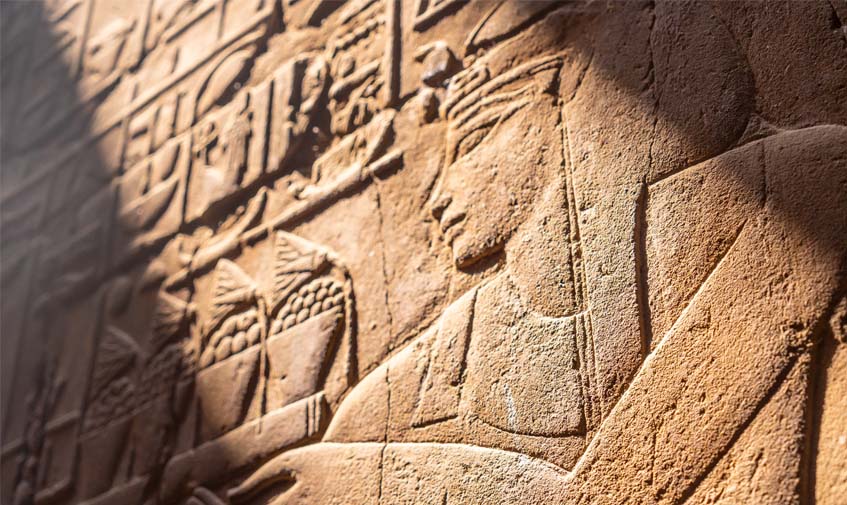
Image by wirestock on Freepik
Put it in your calendar. A remake of the Cleopatra movie, starring Gal Gadot, is due in theatres sometime in 2023 and a revival of big bib necklaces, scarab pendants and serpent armbands is sure to follow.
Outbreaks of Egyptomania have occurred throughout history and have been welcomed as inspiration for many areas of art and design. Jewellery especially has mounted several Egyptian revivals over the years, influencing Art Deco style in particular, with Egyptian themes cropping up often since then.
A timeline of Egyptomania
The first major period of Egyptian revival:
1798 - Napoleon decides that Egypt will be just the thing to add to the empire. Although his military campaign was ultimately doomed, Napoleon’s foray to Egypt sparked much interest in Egyptian culture and yielded significant historical breakthroughs, spawning much Egyptian centric literature and art.
1799 – The Rosetta Stone is discovered enabling hieroglyphs to be deciphered and developing the field of Egyptology. Named because it was discovered near the town of Rosetta, the stone bears an inscription in three languages, Egyptian Hieroglyphs, Egyptian Demotic and Greek. The presence of Greek text enabled scholars to eventually unlock the meaning of the hieroglyphs.
1869 – The Suez Canal opens connecting the Mediterranean to the Red Sea for the first time in recent history. This is said to have sparked renewed Egyptian related enthusiasm especially in North America.
1871 – Verdi’s Aida opens. The love triangle between Aida, the captive princess, Radames, an Egyptian general and Amneris, an Egyptian princess, was written in celebration of the opening of Cairo’s opera house. The opera brought Egypt to the masses when it was played to audience across Europe.
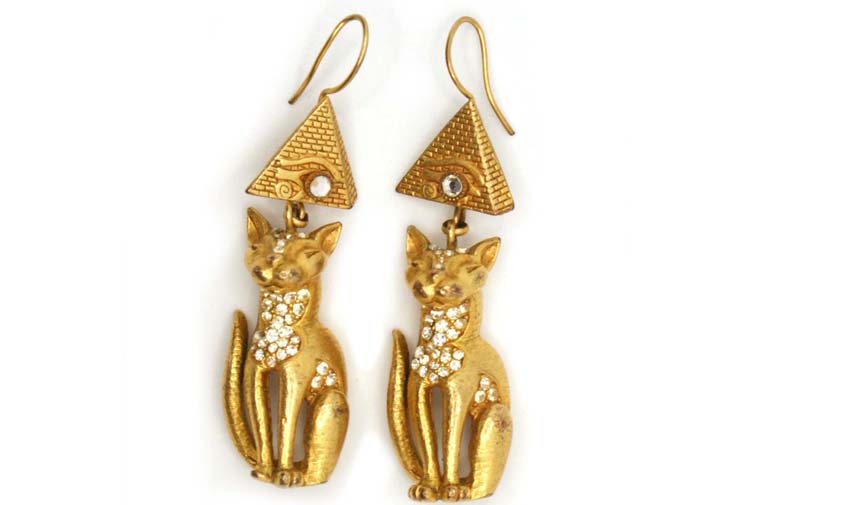
Classic Egyptian revival earrings by Askew London featuring Bastet cats, the Eye of Horus and pyramids for good measure.
The second major period of Egyptian revival:
1922 – Howard Carter discovers the tomb of King Tutankhamun. Illustrations of the grave goods and the golden mask are seen around the world and heavily influence the design of Art Deco jewellery.
The public fascination with Egypt and its history was kept alive between the two great Egyptian revival periods by a trickle of discoveries of various tombs and artifacts. There was another resurgence in the popularity of Egyptian themed jewellery in the early 1960s after the release of the Cleopatra movie starring Elizabeth Taylor.
Shop Egyptian Revival Jewellery |
|||
|---|---|---|---|
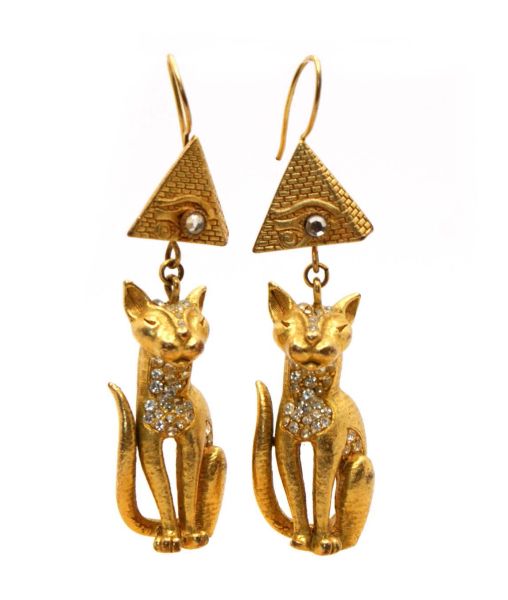
|
Vintage Askew London Bastet Cat Earrings Pierced Ears |
||
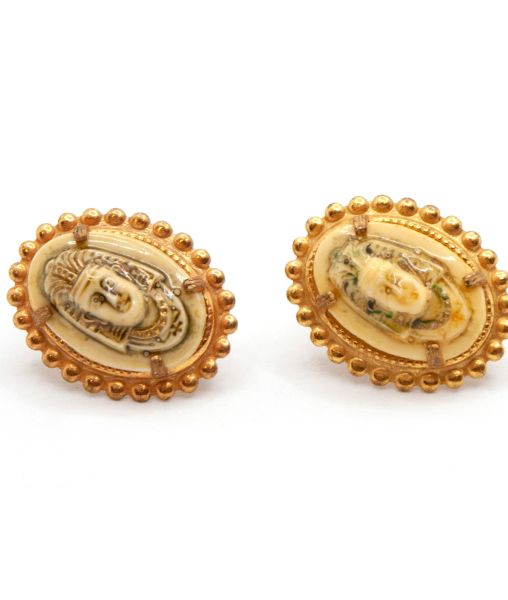
|
Miriam Haskell Egyptian Clip Earrings£85.00
|
||
What is Egyptian Revival Jewellery?
High end jewelers produced Egyptian inspired pieces with Tiffany’s and Cartier being two notable examples. Many 1920s Cartier pieces included authentic Egyptian antiquities. This practice would likely be frowned upon today, but the results were stunning. Those pieces are highly sought after and sell for huge sums at auction. This Cartier fan brooch sold for 1.1 million USD in 2013.
It's also interesting to note that many pieces of 19th century Egyptian revival jewellery used actual beetles in their settings. Thankfully, costume jewellery designers of the 20th century preferred glass scarab beetles.
EGYPTIAN REVIVAL Designs and Motifs
King Tut – the boy king’s striking blue and gold funerary mask is ubiquitous in mid 20th century Egyptian revival jewellery
Nefertiti – judging by the proliferation of her image, with its flat-topped crown, in art and design it would seem the general public agrees with the meaning of her name ‘The Beautiful One Has Come’
The Sphinx and the Pyramids - immediately recognizable as symbols of Egypt
Bastet cat – the goddess of protection and pleasure
Egyptian Signs and Symbols
These Egyptian signs and symbols are typically found on Egyptian revival jewellery.
 ankh – the symbol of life
ankh – the symbol of life
 ba – the human soul as a bird
ba – the human soul as a bird
 Eye of horus – symbolizing completeness
Eye of horus – symbolizing completeness
 Lotus flower – pharaohs were often painted with lotus flowers
Lotus flower – pharaohs were often painted with lotus flowers
 Scarab beetle – a symbol of rebirth
Scarab beetle – a symbol of rebirth
Costume Jewellery Designers and Manufacturers of Egyptian Revival
Many costume jewellery designers of the 20th century released some Egyptian inspired pieces but the following are some of the most dedicated examples.
Neiger Brothers
The Neiger Brothers created Egyptian Revival jewellery in the 1920s. Their jadeite and coral glass brooches featuring pyramids and other Egyptian symbols are especially collectible. They also produced intricately detailed beaded necklaces decorated with Egyptian themes as seen in the following scarab bead necklace image.
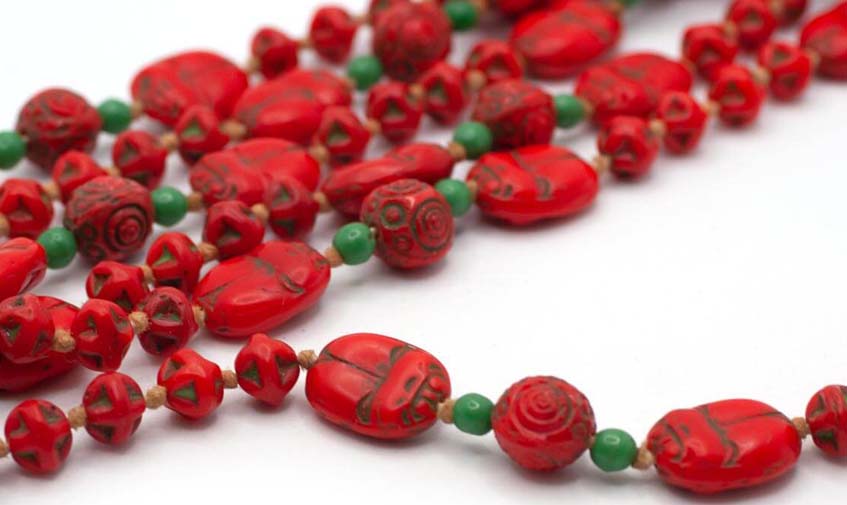
Beaded necklace from the 1920s by Neiger Brothers featuring glass scarab beads
Joseff of Hollywood
Producer of some of the most recognizable Egyptian revival jewellery – think serpent armbands and huge bib necklaces. Joseff was contracted to produce the jewellery for the Cleopatra film in 1963.
Larry Vrba for Miriam Haskell
Apparently inspired by a touring Tutankhamun exhibition, Larry Vrba produced a series of Egyptian revival jewellery for Miriam Haskell in the 1970s.
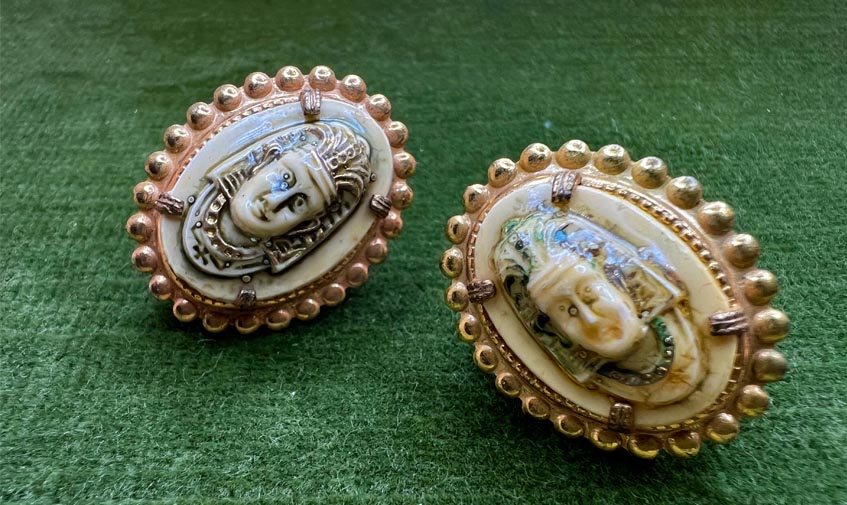
Egyptian style earrings from Miriam Haskell
Jonette
The designed a series of brooches and pendants in bright yellow brushed gold plate showing various Egyptian scenes such as a camels and pyramids.

